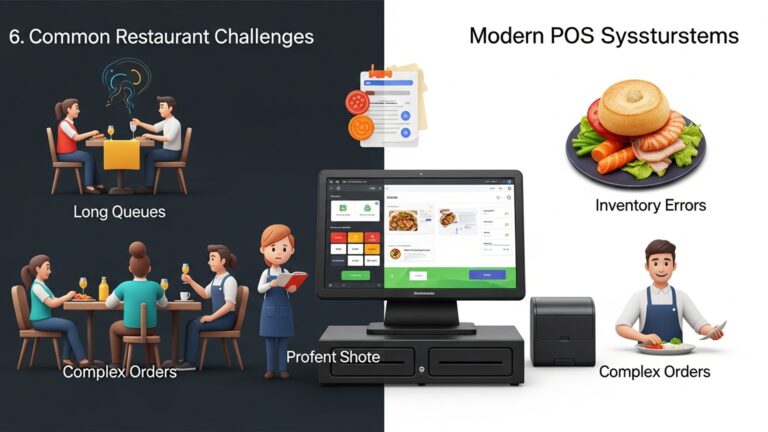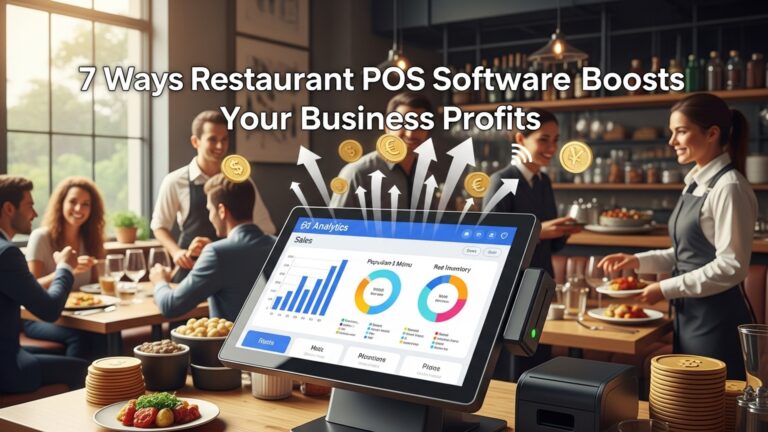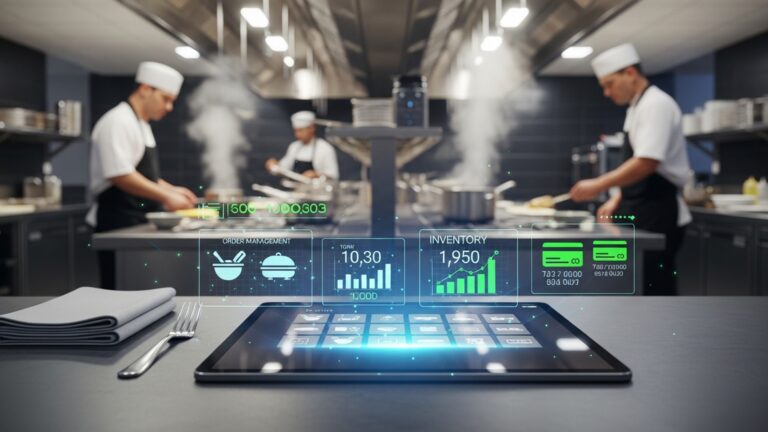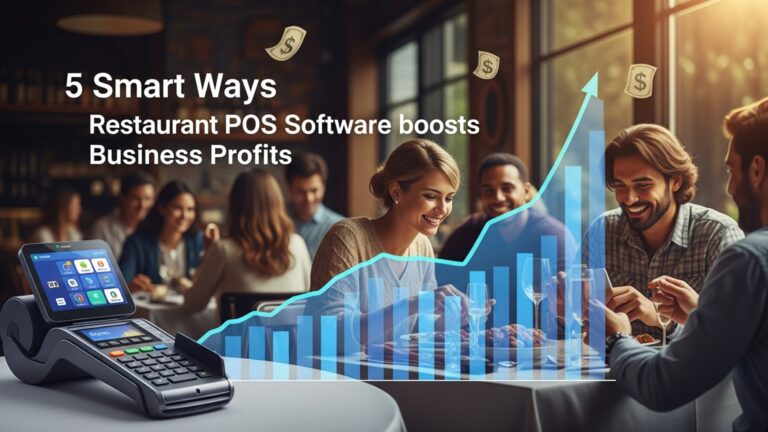Unlock Efficiency 8 Vital Multi Outlet Clothing POS System Tips for Success
In today’s dynamic retail landscape, a robust multi outlet clothing POS system is no longer a mere transaction tool but the central nervous system for scalable operations. Modern fashion brands, from fast-fashion chains to bespoke boutiques, leverage cloud-based POS solutions to achieve real-time inventory synchronization across physical stores and integrated e-commerce channels, preventing costly stockouts and enhancing customer satisfaction. The ability to track sales performance, manage staff. review customer purchasing patterns seamlessly from a unified platform provides invaluable insights for merchandising and marketing strategies. As omnichannel experiences become the norm, optimizing your POS setup ensures streamlined returns, personalized promotions. efficient stock transfers between locations, ultimately driving profitability and competitive advantage.
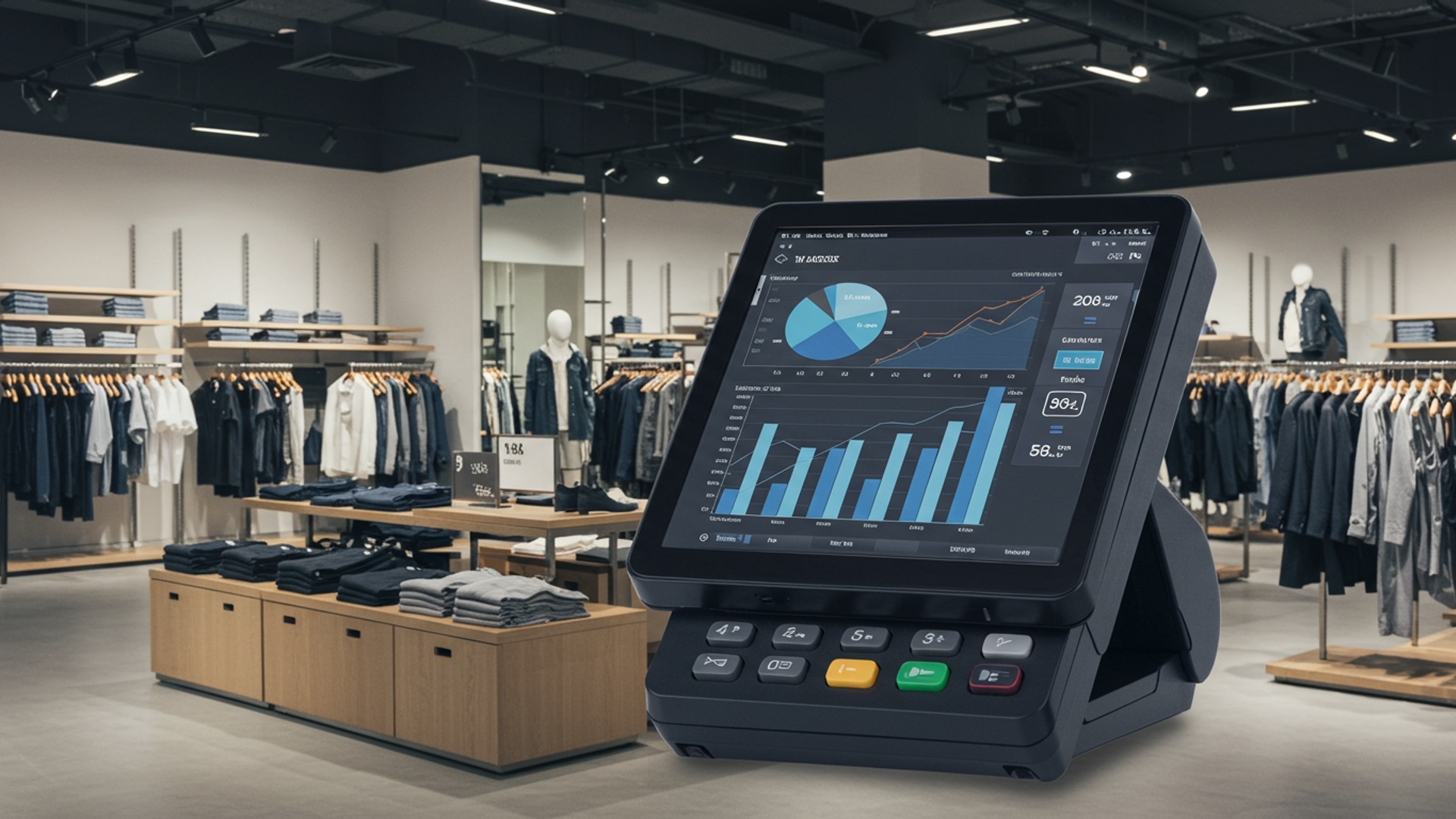
1. Centralized Inventory Management: The Backbone of Multi-Outlet Retail
For any clothing retailer operating across multiple locations, the sheer complexity of inventory tracking can quickly become a significant hurdle. A robust multi outlet clothing POS system centralizes inventory management, transforming a chaotic process into a streamlined operation. This means every item, from a limited edition designer dress to a basic t-shirt, is accounted for across all your stores and even your online channels from a single, unified database.
Centralized inventory management consolidates all stock data into one master system. When a sale occurs in Store A, or a return is processed in Store B, the central database is updated instantly. This provides a real-time, accurate picture of stock levels across your entire enterprise.
- Prevents Stockouts and Overstocking
- Optimizes Ordering
- Enhances Customer Experience
By knowing exactly what’s available everywhere, you can intelligently transfer stock between stores to meet demand, preventing lost sales from empty shelves in one location while another store has excess.
Aggregate sales data from all outlets allows for more accurate forecasting and bulk purchasing, often leading to better vendor discounts and reduced carrying costs.
Staff can quickly check stock availability at other branches or online, offering options like “buy online, pick up in-store” (BOPIS) or inter-store transfers, turning potential lost sales into successful transactions.
Imagine a popular jacket sells out in your downtown boutique. your suburban outlet has 20 in stock. With a centralized system, the downtown store associate can immediately locate and reserve one for the customer, either for pickup or delivery. Without it, that customer might walk away. the suburban stock might sit idle.
Comparison: Centralized vs. Decentralized Inventory
| Feature | Centralized Inventory (POS Integrated) | Decentralized Inventory (Separate Systems) |
|---|---|---|
| Accuracy | High, real-time updates across all locations. | Low, prone to discrepancies and delays. |
| Efficiency | Streamlined transfers, optimized ordering, reduced manual effort. | Labor-intensive, manual tracking, inefficient stock movement. |
| Customer Service | Enhanced; cross-store availability, BOPIS, endless aisle. | Limited; can only serve from local store stock. |
| Cost Control | Reduced stockouts, optimized inventory investment, better bulk discounts. | Higher holding costs, increased risk of obsolescence, lost sales. |
2. Real-Time Data Synchronization: Ensuring Seamless Operations
In the fast-paced world of retail, outdated data is detrimental. Real-time data synchronization is the engine that drives a powerful multi outlet clothing POS system, ensuring that every piece of data – from sales transactions and inventory updates to customer profiles and pricing changes – is instantly consistent across all your physical stores and e-commerce platforms.
Data synchronization refers to the process of ensuring that data in multiple locations or applications remains consistent. “Real-time” means this consistency is achieved instantaneously, as soon as a change occurs. For a POS system, this typically involves cloud-based architecture where all terminals communicate with a central server.
- Accurate Reporting
- Prevents Pricing Errors
- Consistent Customer Experience
Business owners rely on accurate sales figures, inventory levels. customer data to make informed decisions. Real-time sync ensures reports reflect the absolute current state.
A price change initiated at headquarters or in one store is immediately reflected across all outlets, avoiding customer confusion and potential revenue loss.
Whether a customer shops online or in-store, their purchase history, loyalty points. preferences are accessible, enabling a personalized and consistent experience.
Most modern multi-outlet POS systems achieve real-time synchronization through cloud computing. Each POS terminal acts as a client that sends and receives data from a central cloud server. When a transaction happens, the data is immediately pushed to the cloud. any other connected device can pull that updated data. This often happens via APIs (Application Programming Interfaces).
// Simplified concept of a real-time POS update
function processSale(item, quantity, storeID) { // 1. Record sale locally recordTransaction(item, quantity, storeID); // 2. Update central inventory via API sendAPIRequest('POST', '/api/inventory/deduct', { itemId: item. id, quantity: quantity, storeId: storeID }); // 3. Update customer loyalty points (if applicable) sendAPIRequest('PUT', '/api/customer/loyalty', { customerId: currentCustomer. id, pointsEarned: calculatePoints(item, quantity) }); // 4. Acknowledge and ensure data consistency across all points // (System handles propagation to other stores/online)
}
When evaluating a multi outlet clothing POS system, always inquire about its data synchronization capabilities. Test the system’s responsiveness by making a change in one terminal and observing how quickly it reflects in another. Look for systems that promise “near real-time” or “instantaneous” updates, backed by robust cloud infrastructure.
3. Customer Relationship Management (CRM) Integration: Personalizing the Shopping Journey
In today’s competitive retail landscape, understanding your customers is paramount. A truly effective multi outlet clothing POS system integrates robust Customer Relationship Management (CRM) functionalities, allowing you to build detailed customer profiles and deliver highly personalized shopping experiences across all touchpoints.
CRM integration within a POS system means that customer data – purchase history, preferences, loyalty points, contact data. even return patterns – is collected and stored centrally. This data is accessible to sales associates at any store or online, enabling them to recognize, comprehend. cater to individual customer needs.
- Enhanced Personalization
- Effective Loyalty Programs
- Targeted Marketing
- Improved Customer Service
Knowing a customer’s past purchases or preferred styles allows associates to make tailored recommendations, increasing sales and customer satisfaction. “I see you often buy our ‘Eco-Chic’ line; we just received a new organic cotton collection you might love.”
Track and manage loyalty points, rewards. exclusive offers seamlessly across all outlets, encouraging repeat business.
Segment customers based on their buying habits and preferences for more effective email campaigns, promotions. new product announcements.
Access to purchase history makes returns, exchanges. warranty claims smoother, as associates can quickly verify past transactions.
Case Study: Fashion Forward Boutique
Fashion Forward, a regional clothing chain with five stores, implemented a multi outlet clothing POS system with integrated CRM. Before, customer data was siloed at each store. After integration, their sales associates could access a customer’s entire purchase history, regardless of which store they visited. This led to:
- A 15% increase in average transaction value due to personalized upselling and cross-selling.
- A 20% increase in loyalty program enrollment and redemption.
- A significant reduction in customer service resolution time for returns and inquiries.
Ensure your chosen multi outlet clothing POS system offers comprehensive CRM features. Look for capabilities like customer segmentation, loyalty program management, detailed purchase history tracking. the ability to capture customer preferences. This data is gold for fostering long-term customer relationships.
4. Employee Management & Performance Tracking: Optimizing Your Workforce
Your staff are the front line of your brand. A sophisticated multi outlet clothing POS system extends beyond mere sales processing to include robust employee management and performance tracking tools. This allows you to optimize staffing, manage schedules. motivate your team across all your retail locations.
Employee management features within a POS system typically include time clock functionality, sales performance tracking (individual and team), commission calculations, access control. sometimes even scheduling tools. This centralizes HR-related data relevant to store operations.
- Enhanced Accountability
- Optimized Staffing
- Streamlined Payroll
- Improved Employee Morale
Track individual sales performance, conversion rates. average transaction values, allowing you to identify top performers and areas needing improvement.
review sales trends and foot traffic patterns across different stores and times to schedule staff more effectively, reducing labor costs while ensuring adequate coverage.
Integrated time clocks and commission tracking simplify payroll processing, reducing manual errors and administrative burden.
Transparent performance metrics and fair commission structures can motivate staff. Recognizing high achievers across all outlets fosters healthy competition.
Consider a busy Saturday. Your multi outlet clothing POS system shows that Sarah in Store A consistently has a higher average transaction value than other associates. You can examine her techniques, use her as an example for training, or even temporarily deploy her to a struggling store to share best practices. Conversely, if a store is consistently underperforming, you can delve into staff performance data to identify specific training needs.
- Time Clock Integration
- Individual Sales Reporting
- Commission Management
- Role-Based Access Control
For accurate clock-ins/outs and break tracking.
Sales volume, units per transaction (UPT), average transaction value (ATV).
Automated calculation based on sales or specific products.
Define permissions for different staff levels (e. g. , manager, sales associate, cashier) to enhance security.
“Effective employee management through your POS isn’t just about tracking; it’s about empowering,” notes retail consultant Dr. Anya Sharma. “When staff comprehend their impact and have clear performance metrics, they’re more engaged. A good multi outlet clothing POS system provides the data to foster this engagement across all your locations.”
5. Robust Reporting & Analytics: Driving Informed Business Decisions
Data is the new currency in retail. A cutting-edge multi outlet clothing POS system isn’t just for processing transactions; it’s a powerful business intelligence tool, offering robust reporting and analytics capabilities that provide deep insights into your operations across all your stores.
This feature set provides comprehensive data visualization and analysis tools. It gathers data from all sales, inventory movements, customer interactions. employee performance, consolidating it into customizable reports and interactive dashboards. These insights help identify trends, opportunities. areas for improvement.
- Identifies Best-Selling Products
- Analyzes Sales Performance
- Optimizes Inventory
- Understanding Customer Behavior
- Reveals Operational Efficiencies
Pinpoint which items are flying off the shelves across all locations, or even store-specific bestsellers, to inform future buying decisions.
Compare sales figures by store, by day, by employee, or by product category to grasp what’s working and what isn’t.
Reports on inventory turnover, dead stock. seasonal demand help you fine-tune your purchasing and merchandising strategies.
Track average basket size, customer demographics (if collected). popular payment methods to tailor your offerings.
Identify peak hours to optimize staffing, assess return rates to address product quality or sales training.
- Sales Reports
- Inventory Reports
- Customer Reports
- Employee Performance Reports
- Financial Reports
Daily, weekly, monthly sales by store, item, category. employee.
Stock levels, inventory turnover, cost of goods sold, slow-moving items.
Loyalty program performance, customer purchase history, demographics.
Individual sales, average transaction value, units per transaction.
Gross margin, net sales, tax reports.
When selecting your multi outlet clothing POS system, prioritize its reporting capabilities. Look for systems that offer customizable reports, intuitive dashboards. the ability to export data for further analysis. A system that can generate an “at-a-glance” health check of your entire business, or drill down into the performance of a single SKU in a specific store, is invaluable.
For example, a dashboard might show:
// Example of a POS dashboard overview
{ "overall_sales_today": "$15,000", "top_performing_store": "Downtown Boutique (+$5000)", "lowest_performing_store": "Mall Kiosk (-$500)", "top_selling_item": "Vintage Denim Jacket (150 units)", "inventory_value_across_all_stores": "$500,000", "customer_loyalty_signups_today": 25, "average_transaction_value": "$75. 20"
}
6. Scalability & Flexibility: Future-Proofing Your Retail Business
As your clothing brand grows, so should your technological infrastructure. A crucial aspect of any successful multi outlet clothing POS system is its inherent scalability and flexibility. Choosing a system that can adapt to your evolving needs ensures that your investment continues to pay dividends long into the future.
- Scalability
- Flexibility
Refers to a system’s ability to handle an increasing workload or number of users/locations without compromising performance. For a POS, this means seamlessly adding new stores, more products, or higher transaction volumes.
Denotes the system’s capacity to adapt to changing business requirements, integrate with new technologies, or customize features to suit specific operational needs (e. g. , pop-up shops, seasonal campaigns).
- Growth Accommodation
- Adapting to Market Trends
- Cost-Effectiveness
- Customization for Unique Needs
If you plan to open more stores, a scalable system ensures a smooth expansion without needing to overhaul your entire POS infrastructure. You simply add new terminals or locations to your existing setup.
The retail landscape is constantly changing. A flexible system allows you to quickly integrate new payment methods (e. g. , mobile wallets), e-commerce platforms, or customer engagement tools.
Investing in a scalable system upfront prevents the significant cost and disruption of migrating to an entirely new system every few years as your business expands.
Clothing retail can have unique requirements – specific sizing matrices, complex bundles, or specialized promotions. A flexible POS allows for customization to meet these nuances.
- Cloud-Based Architecture
- API Availability
- Modular Design
- Vendor Support & Updates
Cloud POS systems are inherently more scalable as they can easily provision more resources (servers, storage) as needed.
A system with well-documented APIs (Application Programming Interfaces) indicates flexibility, allowing you to integrate with third-party tools like accounting software, marketing platforms, or specialized inventory solutions.
Can you add or remove features (e. g. , loyalty program, advanced analytics) as your needs change, without affecting core functionality?
A vendor committed to continuous development and offering regular updates suggests a forward-thinking, flexible platform.
When evaluating a multi outlet clothing POS system, ask potential vendors directly about their scalability and integration capabilities. Inquire about their API documentation and a roadmap for future features. A system that can grow with you and adapt to tomorrow’s retail challenges is a strategic asset.
7. Seamless Omnichannel Experience: Bridging Online and Offline
In the modern retail environment, customers don’t just shop in one place; they move fluidly between physical stores, your website, social media. mobile apps. A truly effective multi outlet clothing POS system is the cornerstone of a seamless omnichannel experience, uniting all these touchpoints into a cohesive and convenient customer journey.
An omnichannel experience ensures that a customer’s journey is consistent and uninterrupted, regardless of the channel they use. For a clothing retailer, this means inventory, customer data, pricing. promotions are synchronized across your brick-and-mortar stores, e-commerce site. any other sales channels. The POS acts as the central hub for this unification.
- Customer Convenience
- Increased Sales & Loyalty
- Single View of the Customer
- Reduced Redundancy & Errors
Customers expect flexibility. They want to check stock online, reserve an item, try it on in-store. return it to a different branch if needed. A unified system makes this possible.
By removing friction points, you encourage more purchases. Options like “buy online, pick up in-store” (BOPIS) or “ship from store” leverage your physical inventory to fulfill online orders faster.
All customer interactions – online purchases, in-store browsing history, loyalty points – are consolidated. This allows for truly personalized marketing and service across all channels.
Avoids situations where an item is shown as available online but is actually out of stock in-store, or vice-versa.
Consider a scenario where a customer browses your online store for a specific dress. They can see which of your physical stores has it in stock thanks to real-time inventory updates from your multi outlet clothing POS system. They reserve it online, then pick it up at their nearest store. While there, the associate, using the same POS system, can see their online browsing history and suggest a matching accessory, completing a truly integrated shopping experience.
- Integrated E-commerce Platform
- “Endless Aisle” Capability
- Unified Returns & Exchanges
- Centralized Loyalty Programs
Your POS should connect directly with your online store, synchronizing inventory, sales. customer data.
If an item is out of stock in-store, associates can use the POS to order it from another store or your warehouse and have it shipped directly to the customer’s home.
Customers can return online purchases in-store. vice-versa, with ease.
Loyalty points earned online can be redeemed in-store. vice-versa.
“Omnichannel isn’t a luxury anymore; it’s a necessity for retail survival,” states industry expert Sarah Chen. “Your multi outlet clothing POS system isn’t just a cash register; it’s the central nervous system that connects every part of your customer’s journey, making it smooth and memorable.”
8. Vendor & Supply Chain Integration: Streamlining Procurement
Efficient inventory management starts long before an item hits the sales floor. The final vital tip for success with a multi outlet clothing POS system is leveraging its capabilities for seamless vendor and supply chain integration. This streamlines procurement, reduces lead times. ensures your stores are always stocked with the right products.
Vendor and supply chain integration involves connecting your POS system directly with your suppliers’ systems or using its built-in features to manage purchasing, receiving. vendor relationships. This can range from automated purchase order generation to tracking shipments and managing vendor performance.
- Automated Reordering
- Improved Forecasting
- Reduced Lead Times
- Enhanced Cost Control
- Better Vendor Relationship Management
Based on real-time sales data and predefined reorder points, your POS can automatically generate purchase orders for your suppliers, minimizing manual effort and ensuring timely replenishment across all stores.
By analyzing historical sales data from all outlets, the system can provide more accurate forecasts, helping you order the right quantities of seasonal or popular items.
Streamlined communication with vendors and automated processes can significantly shorten the time between placing an order and receiving stock.
Better inventory planning and automated purchasing can help negotiate better terms with suppliers and avoid costly expedited shipping.
Track vendor performance (delivery times, accuracy, quality) to ensure you’re working with reliable partners.
Imagine a particular style of denim jeans is consistently a top seller across all your locations. Your multi outlet clothing POS system, tracking sales velocity, could automatically trigger a purchase order to your denim supplier once stock levels dip below a certain threshold. This order could be based on aggregated demand from all stores, ensuring efficient bulk purchasing and avoiding individual store managers having to manually reorder.
- Purchase Order (PO) Management
- Receiving & Stocking
- Vendor Database
- Automated Alerts
Create, send. track purchase orders directly from the POS.
Easily receive new shipments, update inventory levels. generate barcode labels.
Maintain a comprehensive list of suppliers with contact details, pricing agreements. order history.
Receive notifications for low stock, delayed shipments, or expiring products.
When selecting a multi outlet clothing POS system, inquire about its supply chain features. Does it offer robust PO management? Can it integrate with your key suppliers, or at least provide easy data export for procurement? A system that helps you manage not just what’s on your shelves. also how it gets there, is a game-changer for efficiency and profitability.
Conclusion
Mastering a multi-outlet clothing POS system isn’t just about adopting new technology; it’s about transforming your retail strategy from fragmented operations into a cohesive, customer-centric experience. By actively leveraging real-time inventory synchronization, comprehensive sales analytics. integrated customer loyalty programs, you empower your business to navigate the competitive apparel market with agility. I’ve personally witnessed how a robust system can turn potential stockout crises into seamless inter-store transfers, preventing lost sales and significantly enhancing customer satisfaction across all branches, a critical advantage in today’s omnichannel retail environment. Your actionable next step is to not merely implement. to engage with your system daily, exploring its full capabilities – from identifying top-selling styles by region to personalizing promotions for your most loyal shoppers. This proactive approach, coupled with ongoing staff training, ensures you’re not just processing transactions. truly understanding and responding to evolving market demands. Remember, the goal is to streamline operations, yes. also to free up valuable time for strategic growth. So, embrace these tools, continually refine your processes. watch your multi-outlet clothing business thrive, turning every sale into an opportunity for greater efficiency and unparalleled customer delight.
More Articles
How to Select the Perfect POS Billing Software for Your Business
Discover 9 Smart Ways Apparel Store Billing Software Boosts Retail Sales
How to Choose and Implement POS Software for Retail Success
10 Essential Multi Outlet Clothing POS System Features for Retail Success
How to Master POS Billing Software for Efficient Retail Operations
FAQs
Why is centralized inventory management so crucial for clothing stores with multiple locations?
Centralized inventory helps you see stock levels across all your stores and online in real-time. This means you can easily transfer items, prevent overselling. make smarter purchasing decisions, avoiding stockouts or excess stock in any single location.
How does a good POS system help me grasp my sales better across different outlets?
A solid POS gives you instant access to sales data from every single store. You can compare performance, identify best-sellers by location. spot trends, helping you make informed decisions about marketing and stock allocation.
Can a multi-outlet POS system really improve customer loyalty?
Absolutely! It lets you track customer purchases and preferences across all your stores. This means you can offer personalized promotions, manage loyalty programs consistently. provide a seamless shopping experience no matter which outlet a customer visits.
What’s the big deal about staff training for a new POS system?
Properly training your team on the POS system is super vital. It reduces errors, speeds up transactions. makes employees more confident, which ultimately leads to happier customers and smoother operations. Don’t skip it!
What should I look for to make sure my POS system can grow with my business?
You’ll want a system that’s designed to be scalable. This means it can easily handle more stores, more products. more transactions without slowing down or needing a complete overhaul as your business expands. Cloud-based systems often excel here.
Is it crucial for my clothing POS to link up with my online store?
Definitely! Integrating your POS with your e-commerce platform creates a unified view of your inventory, sales. customer data. This prevents double-handling, keeps stock accurate across all channels. provides a consistent experience for shoppers whether they’re online or in-store.
How do I know my customer and sales data is safe with a multi-outlet POS?
Look for a POS system that offers robust security features like data encryption, secure payment processing (PCI compliance). user access controls. Cloud-based systems often have enterprise-level security protocols built-in. always check their security policies.

